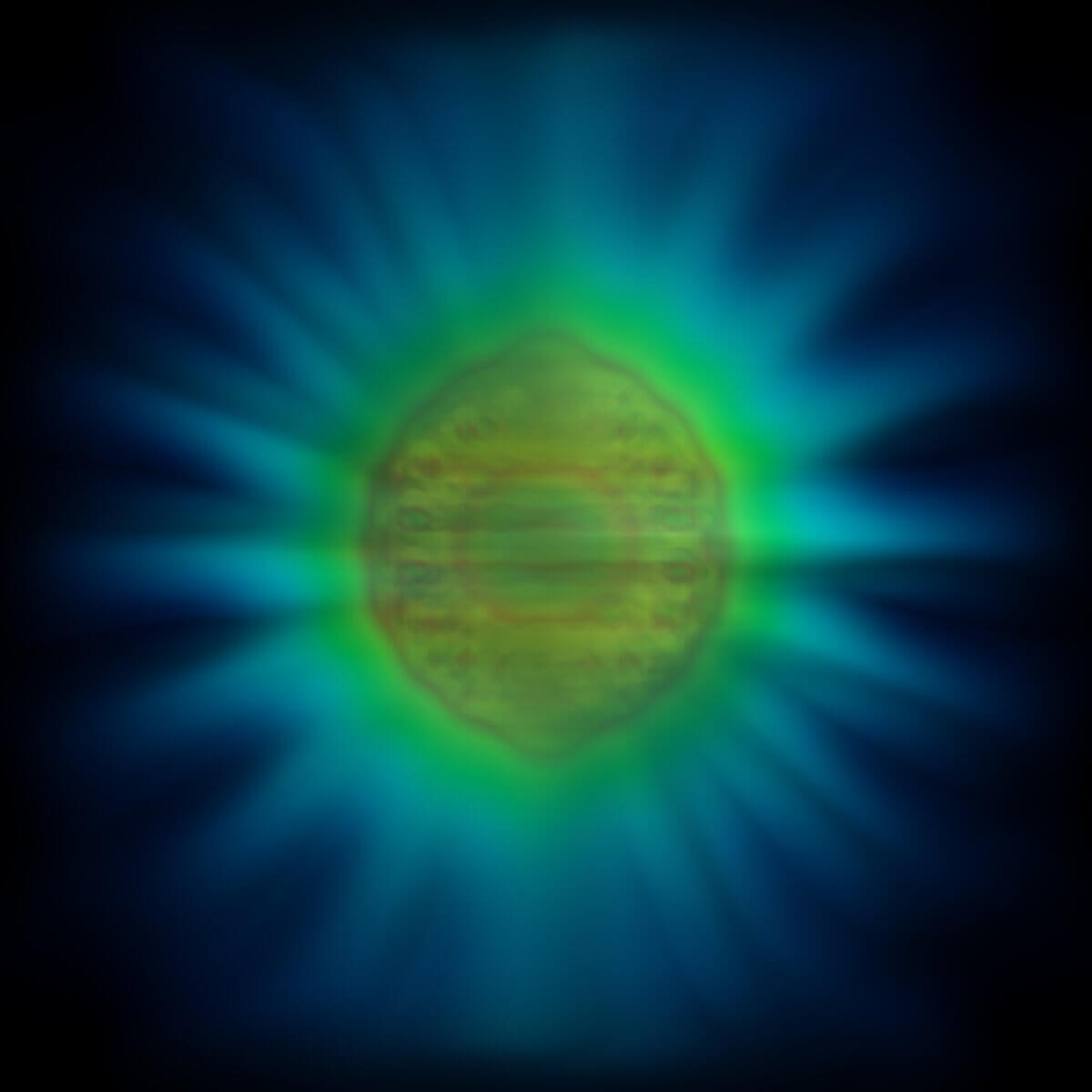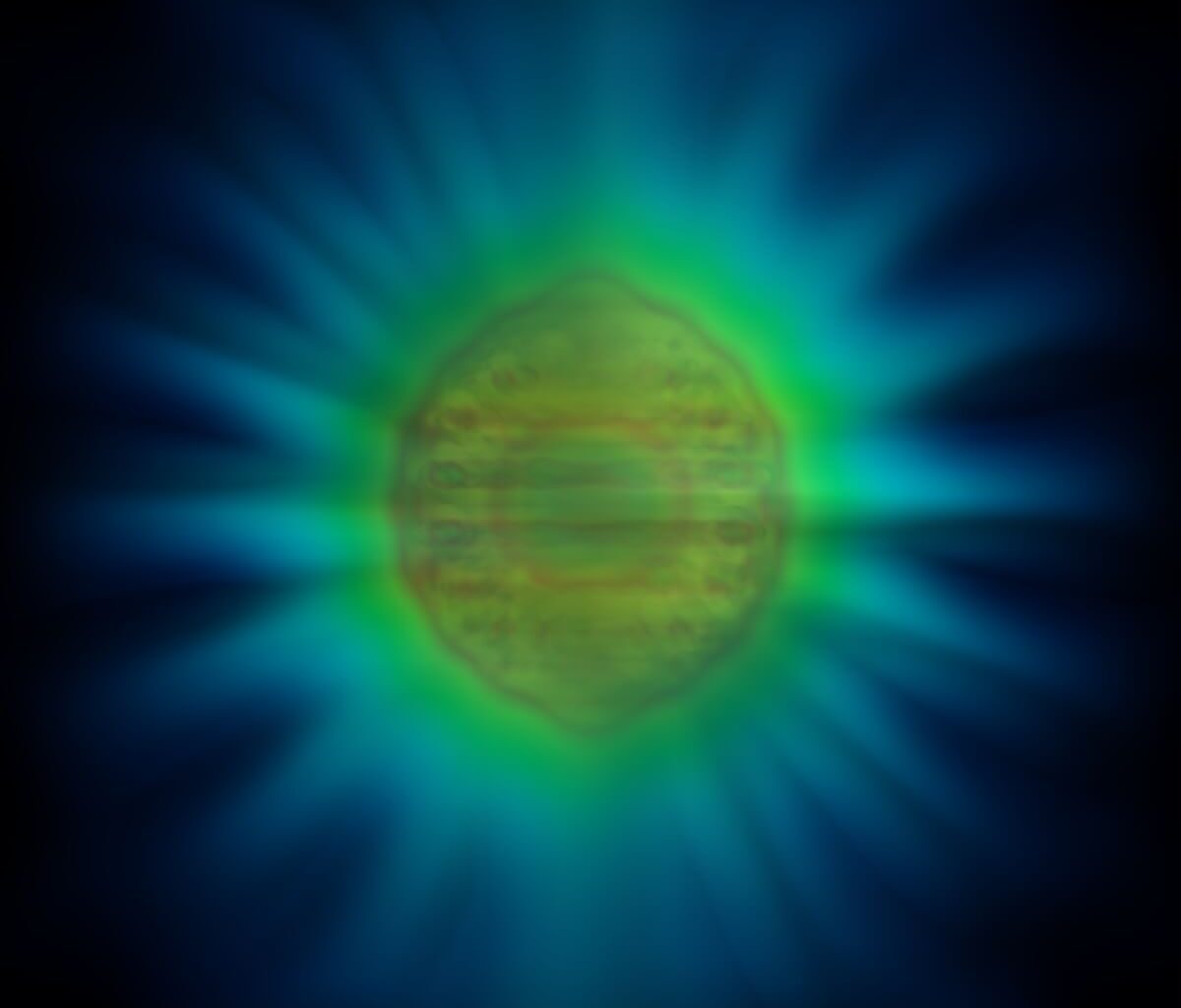

A new theory, that explains how light and matter interact at the quantum level has enabled researchers to define for the first time the precise shape of a single photon. (Credit: Dr Benjamin Yuen)
BIRMINGHAM, United Kingdom — For the first time in physics history, scientists have developed a mathematical framework that allows them to visualize the precise shape of a single particle of light, known as a photon. This breakthrough, achieved by researchers at the University of Birmingham, represents a fundamental advance in our understanding of how light interacts with matter at the quantum level.
At its core, the research solves a problem that has puzzled quantum physicists for decades: how to accurately model the infinite possibilities of how light can interact with and travel through its environment. The team accomplished this by developing a new mathematical approach that groups these countless possibilities into distinct, manageable sets.
“The geometry and optical properties of the environment has profound consequences for how photons are emitted, including defining the photons shape, colour, and even how likely it is to exist,” explains Professor Angela Demetriadou from the University of Birmingham in a statement.
To understand the significance of this work, now published in Physical Review Letters, consider how light behaves in everyday situations. When sunlight passes through a stained glass window, its interaction with the glass creates beautiful colors. At the quantum level, these interactions become far more complex, with individual photons interacting with atoms and molecules in ways that previous mathematical models struggled to describe accurately.
The research team’s new approach, called “pseudomode transformation,” allows scientists to track precisely how light bounces around and interacts with matter in complex nanoscale systems. What makes this method particularly powerful is its ability to describe both what happens near the source of the light and how the energy travels out into the surrounding space.

 A new theory, that explains how light and matter interact at the quantum level has enabled researchers to define for the first time the precise shape of a single photon. (Credit: Dr Benjamin Yuen)
A new theory, that explains how light and matter interact at the quantum level has enabled researchers to define for the first time the precise shape of a single photon. (Credit: Dr Benjamin Yuen)
“Our calculations enabled us to convert a seemingly insolvable problem into something that can be computed,” says Dr. Benjamin Yuen, the study’s first author. “And, almost as a bi-product of the model, we were able to produce this image of a photon, something that hasn’t been seen before in physics.”
To demonstrate their method, the researchers studied what happens when a quantum emitter (such as an atom or molecule) interacts with a tiny silicon sphere just one micrometer in diameter – about one-hundredth the width of a human hair. This seemingly simple system revealed a complex dance of quantum interactions that their new mathematical framework could precisely describe.
“This work helps us to increase our understanding of the energy exchange between light and matter, and secondly to better understand how light radiates into its nearby and distant surroundings,” explains Dr. Yuen. “Lots of this information had previously been thought of as just ‘noise’ – but there’s so much information within it that we can now make sense of, and make use of.”
Methodology
The researchers developed their approach by starting with the fundamental equations that describe how light behaves in these systems. Their key innovation was in how they handled the infinite possibilities of light’s behavior in these quantum systems. Previous methods treated this as a kind of blurry background effect, similar to how a camera lens treats out-of-focus areas. Instead, the Birmingham team developed a mathematical transformation that organizes these infinite possibilities into distinct, manageable sets called “pseudomodes.”
The team demonstrated their method using a one-micrometer silicon sphere as a test case. What makes this method particularly powerful is that it doesn’t rely on the usual simplifying assumptions that other approaches require. Instead of treating the surrounding environment as a kind of fuzzy background noise, their method precisely tracks how light bounces around and interacts with matter in these complex nanoscale systems, providing a complete and exact description of the quantum system’s behavior.
Key Results
The study demonstrated that their method could accurately predict both the behavior of light trapped near the silicon sphere and the light that radiates away from it. They showed how different types of quantum emitters would interact with the sphere, revealing complex quantum behaviors that emerge over time. Importantly, their predictions matched what would be expected from experimental observations, validating their approach.
Practical Applications
The implications of this breakthrough extend beyond theoretical physics. The precise understanding of how photons interact with matter at the quantum level is crucial for developing:
Quantum information processing systems
Quantum transport technologies
More efficient quantum devices
Advanced quantum optical systems
Study Limitations
The current implementation works best with systems that have relatively simple geometries, like spheres. While the method is theoretically applicable to any nanophotonic system, applying it to more complex geometries will require additional mathematical development. The researchers note that their approach can be extended to other photonic geometries through the analytic continuation of the local density of states.
Discussion & Takeaways
This research provides a complete and exact description of light-matter interactions in nanophotonic systems, opening new possibilities for designing quantum devices. The method overcomes long-standing challenges in quantizing non-Hermitian systems and provides a unified framework for understanding both the near-field and far-field behavior of light in these systems.
Funding & Disclosures
The research was supported by the Royal Society through University Research Fellowships (URF/R1/180097 and URF/R/231024) and received funding from the Engineering and Physical Sciences Research Council (EPSRC EP/X012689/1, EP/Y008774/1 and CDT in Topological Design EP/S02297X/1). Additional support came from the Research Fellows Enhancement Award RGF /EA/181038.
